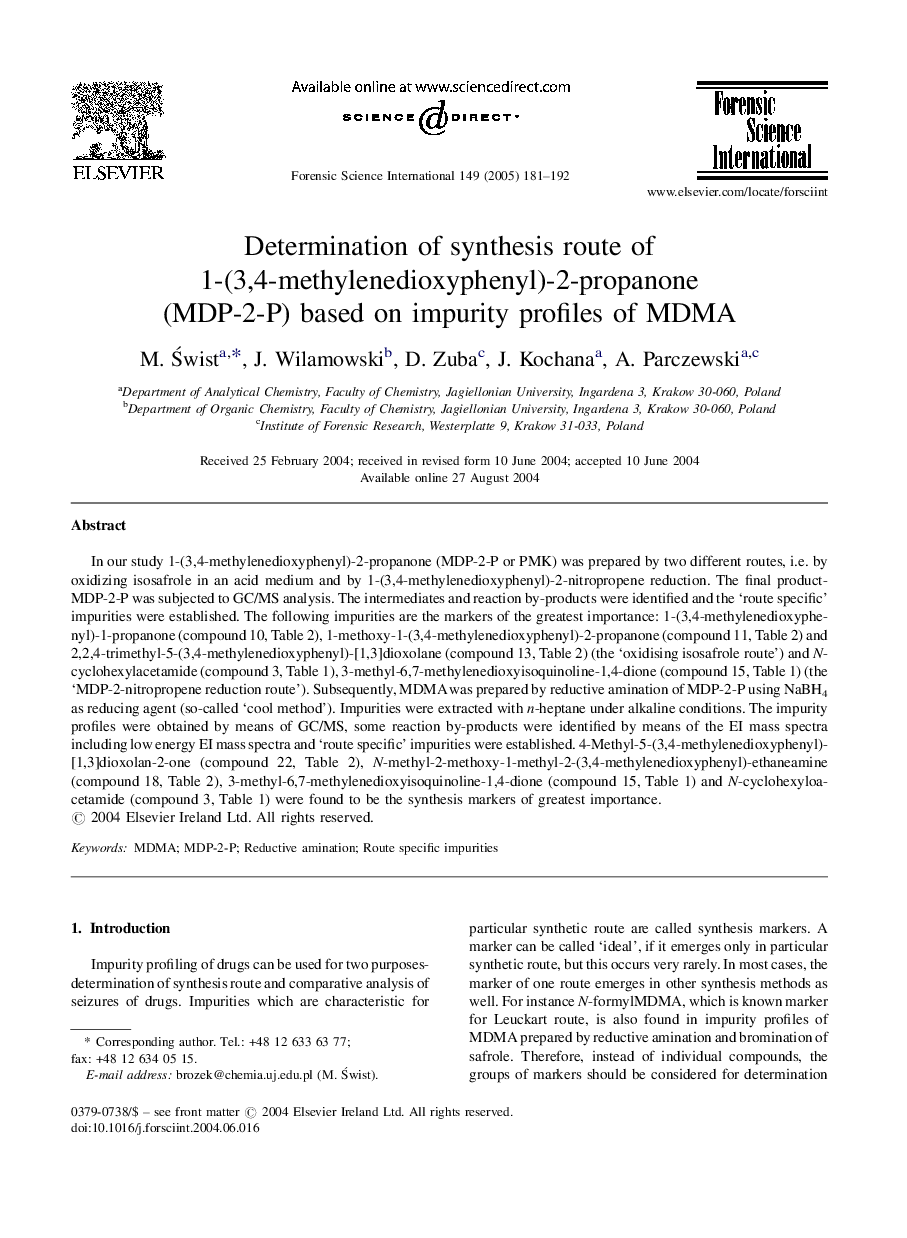| Article ID | Journal | Published Year | Pages | File Type |
|---|---|---|---|---|
| 9622582 | Forensic Science International | 2005 | 12 Pages |
Abstract
In our study 1-(3,4-methylenedioxyphenyl)-2-propanone (MDP-2-P or PMK) was prepared by two different routes, i.e. by oxidizing isosafrole in an acid medium and by 1-(3,4-methylenedioxyphenyl)-2-nitropropene reduction. The final product-MDP-2-P was subjected to GC/MS analysis. The intermediates and reaction by-products were identified and the 'route specific' impurities were established. The following impurities are the markers of the greatest importance: 1-(3,4-methylenedioxyphenyl)-1-propanone (compound 10, Table 2), 1-methoxy-1-(3,4-methylenedioxyphenyl)-2-propanone (compound 11, Table 2) and 2,2,4-trimethyl-5-(3,4-methylenedioxyphenyl)-[1,3]dioxolane (compound 13, Table 2) (the 'oxidising isosafrole route') and N-cyclohexylacetamide (compound 3, Table 1), 3-methyl-6,7-methylenedioxyisoquinoline-1,4-dione (compound 15, Table 1) (the 'MDP-2-nitropropene reduction route'). Subsequently, MDMA was prepared by reductive amination of MDP-2-P using NaBH4 as reducing agent (so-called 'cool method'). Impurities were extracted with n-heptane under alkaline conditions. The impurity profiles were obtained by means of GC/MS, some reaction by-products were identified by means of the EI mass spectra including low energy EI mass spectra and 'route specific' impurities were established. 4-Methyl-5-(3,4-methylenedioxyphenyl)-[1,3]dioxolan-2-one (compound 22, Table 2), N-methyl-2-methoxy-1-methyl-2-(3,4-methylenedioxyphenyl)-ethaneamine (compound 18, Table 2), 3-methyl-6,7-methylenedioxyisoquinoline-1,4-dione (compound 15, Table 1) and N-cyclohexyloacetamide (compound 3, Table 1) were found to be the synthesis markers of greatest importance.
Related Topics
Physical Sciences and Engineering
Chemistry
Analytical Chemistry
Authors
M. Åwist, J. Wilamowski, D. Zuba, J. Kochana, A. Parczewski,
